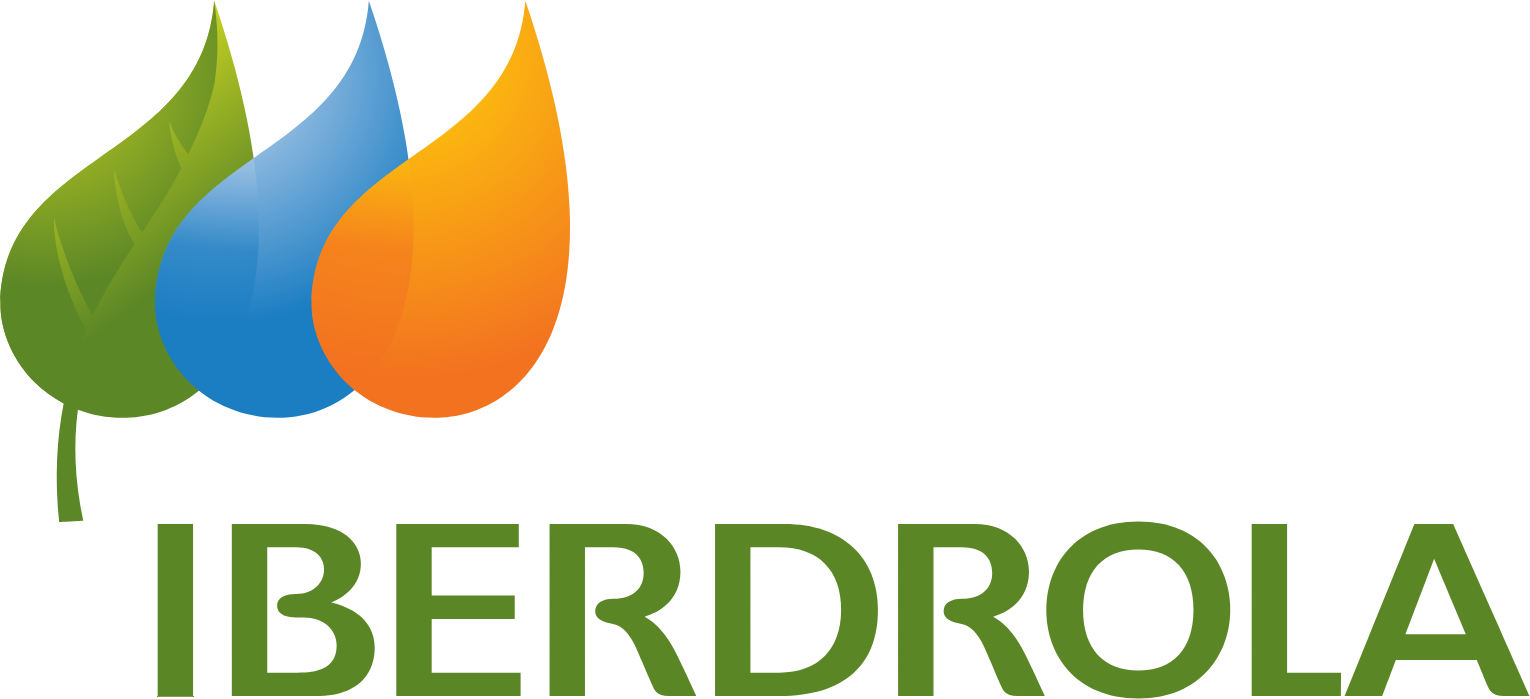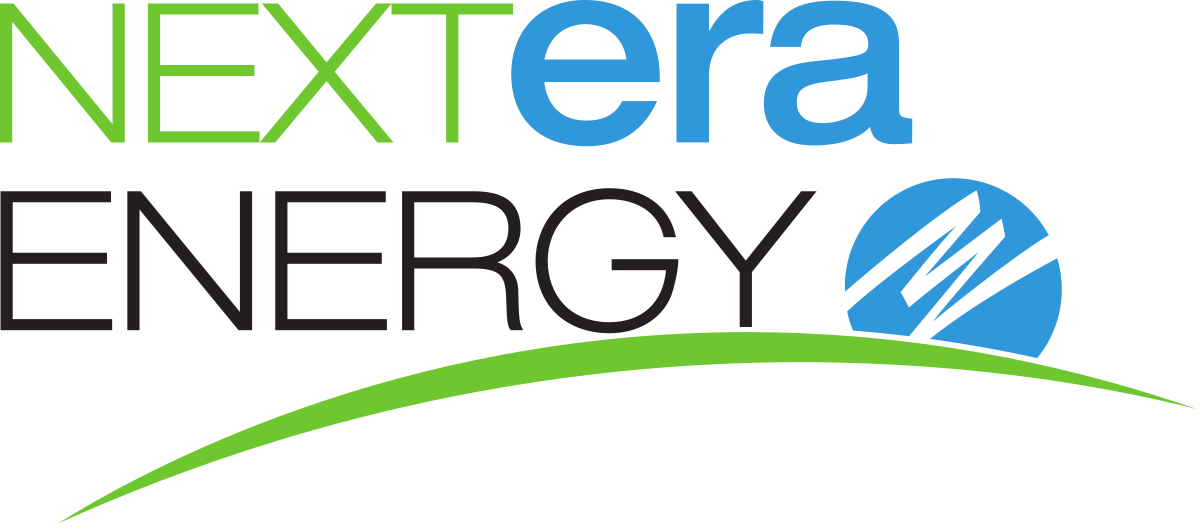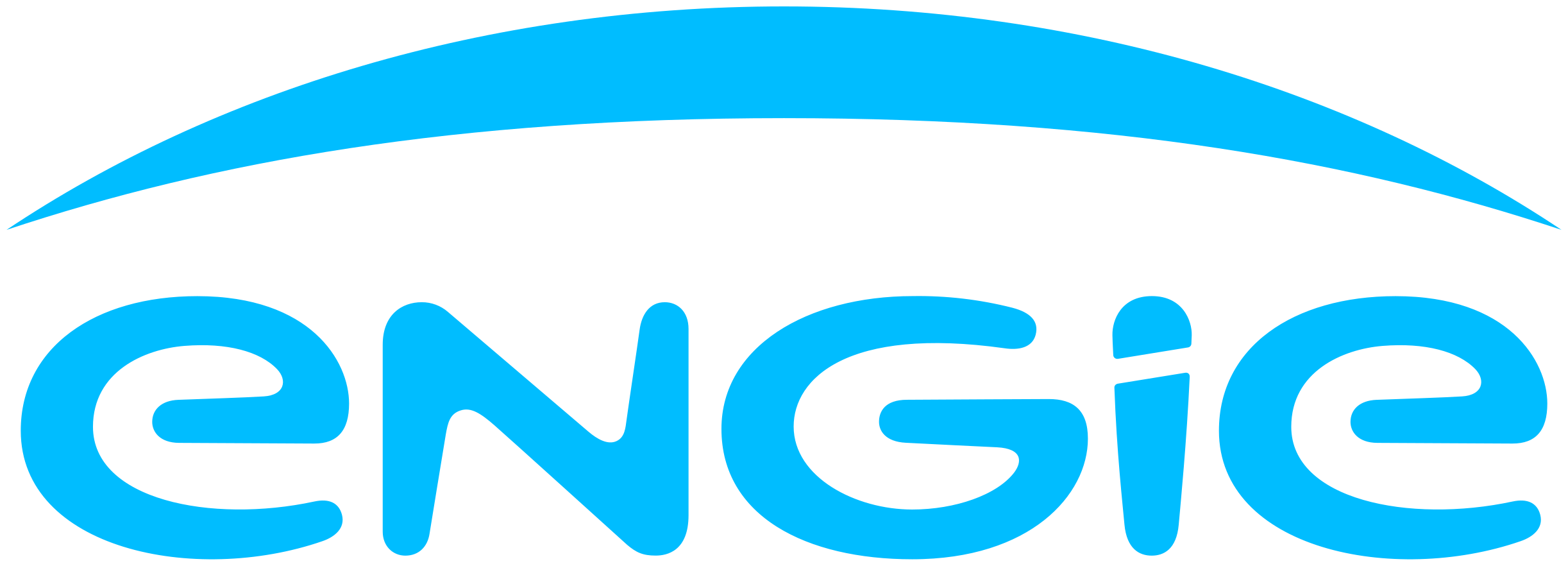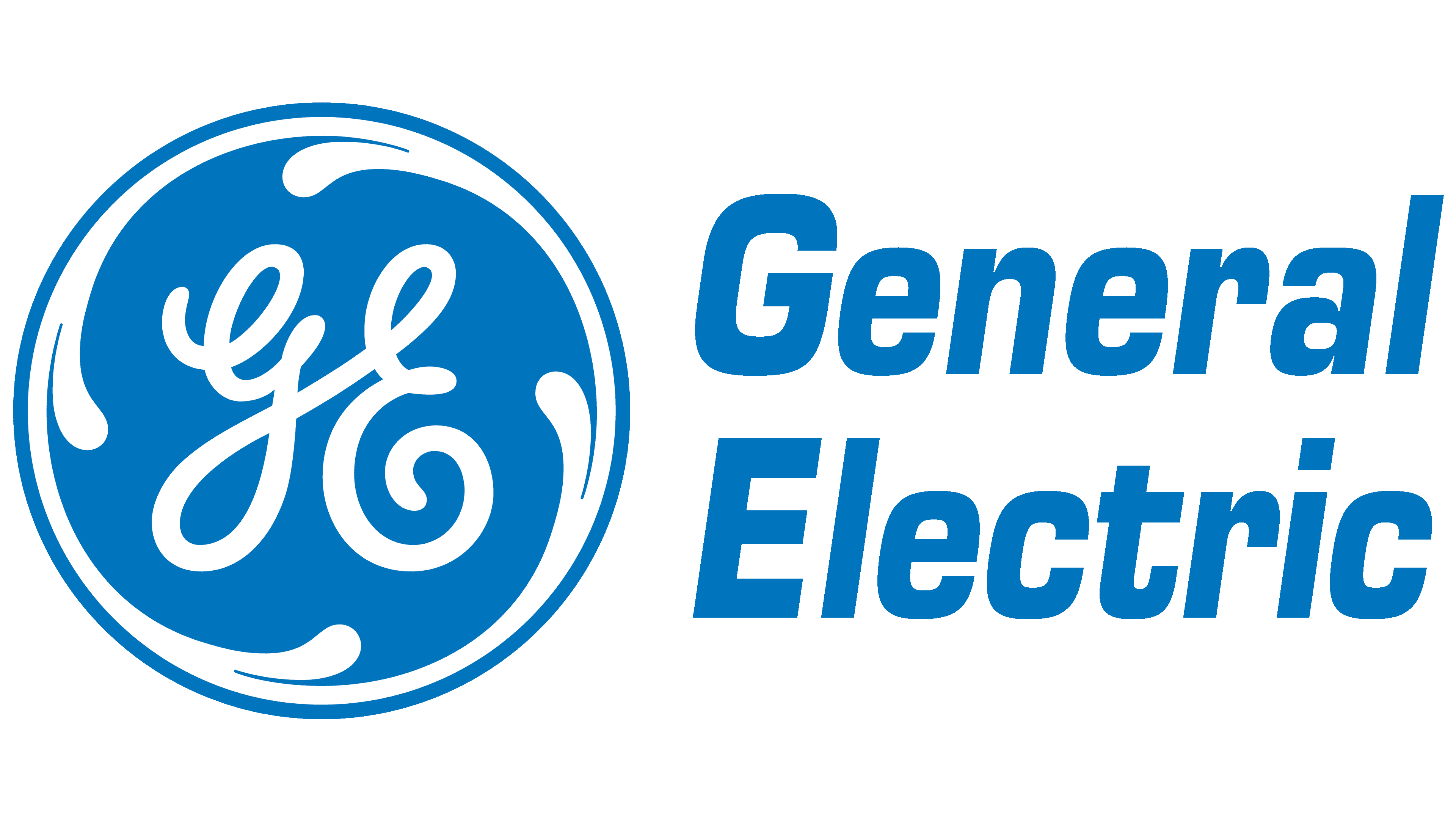Global Portable Fuel Cells Market, By Fuel Type, By Type, By End User, By Region & Segmental Insights Trends and Forecast, 2024 – 2034
- Industry: Energy & Power
- Report ID: TNR-110-1207
- Number of Pages: 420
- Table/Charts : Yes
- July, 2024
- Base Year : 2024
- No. of Companies : 10+
- No. of Countries : 29
- Views : 10116
- Covid Impact Covered: Yes
- War Impact Covered: Yes
- Formats : PDF, Excel, PPT
Portable fuel cells are compact power sources that generate electricity through chemical reactions between hydrogen and oxygen, offering a cleaner alternative to traditional batteries. These fuel cells are used in various applications, including portable electronics, military equipment, and emergency backup systems. The global portable fuel cells market is witnessing significant growth, driven by the increasing demand for sustainable energy solutions and the rising awareness of environmental impacts associated with conventional energy sources.
The market is experiencing a shift towards lightweight and high-efficiency fuel cells, catering to consumer electronics and remote area power supplies. Innovations in fuel cell technology, such as solid oxide fuel cells (SOFC) and proton exchange membrane fuel cells (PEMFC), are opening new avenues for market expansion. Additionally, government incentives and investments in clean energy projects are fostering an environment conducive to market growth.
Key growth drivers include the escalating need for reliable and uninterrupted power supply, especially in off-grid locations, and the growing adoption of portable fuel cells in military applications due to their high energy density and long operational life. The push for reducing carbon footprints and achieving energy independence is propelling the demand for portable fuel cells, making them a pivotal component in the future of clean energy.
In Terms of Revenue, the Global Portable Fuel Cells Market was Worth US$ 5.9 Bn in 2023, Anticipated to Witness CAGR of 18.6% During 2024 – 2034.
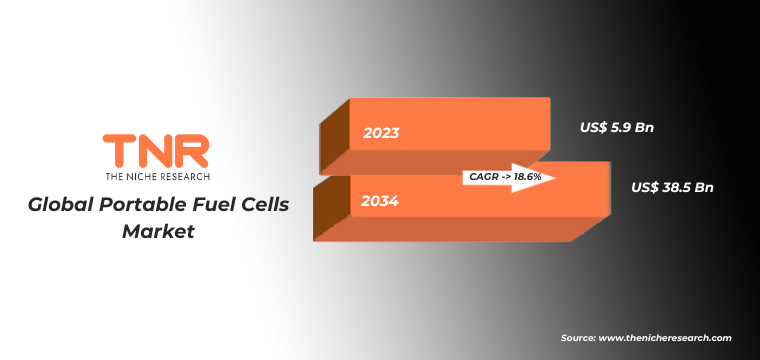
Trends in the Global Portable Fuel Cells Market
- Advancements in Fuel Cell Technology: Innovations such as solid oxide fuel cells (SOFC) and proton exchange membrane fuel cells (PEMFC) are enhancing the efficiency and durability of portable fuel cells. SOFCs offer higher energy conversion efficiency and can operate on a variety of fuels, including hydrogen, natural gas, and biofuels, making them versatile for different applications. PEMFCs, known for their low operating temperatures and quick start-up times, are becoming increasingly popular in consumer electronics and portable power systems. These technological advancements are not only improving the performance of portable fuel cells but also reducing their production costs, thereby broadening their market potential.
- Increasing Adoption in Military and Defense: The military and defense sector is emerging as a significant adopter of portable fuel cell technology, driven by the need for reliable, lightweight, and high-energy-density power sources. Portable fuel cells are being utilized to power a range of military equipment, including communication devices, unmanned aerial vehicles (UAVs), and portable power units for soldiers in the field. Their ability to provide a continuous power supply without the logistical challenges of traditional batteries makes them an attractive option for military operations. Additionally, the reduction in weight and the extended operational life of fuel cells enhance the mobility and endurance of military personnel and equipment, further driving their adoption in this sector.
Hydrogen by fuel type category has emerged as a dominant segment in the global portable fuel cells market, due to its high energy density and environmental benefits. Hydrogen fuel cells produce electricity by combining hydrogen and oxygen, with water as the only byproduct, making them a clean energy solution. The abundance of hydrogen and ongoing advancements in hydrogen storage and distribution technologies have facilitated its adoption in portable fuel cells. Furthermore, hydrogen fuel cells offer longer operational life and quicker refuelling times compared to traditional batteries. This makes them particularly attractive for applications in consumer electronics, military equipment, and remote power systems, solidifying hydrogen’s position as the preferred fuel type in the portable fuel cells market.

In 2023, direct methanol fuel cells (DMFC) segment solidified its position as the second-largest type category within the global portable fuel cells market. DMFCs are favored for their simplicity, as they use liquid methanol directly as fuel, eliminating the need for complex hydrogen storage solutions. They offer a high energy density, making them ideal for portable applications such as consumer electronics, remote sensors, and small power generators. Additionally, DMFCs have a quicker refuelling process compared to other fuel cell types, providing a practical and efficient energy source. The growing demand for reliable and efficient portable power solutions has propelled the adoption of DMFCs, highlighting their significance in the evolving portable fuel cells market.

Automotive segment, categorized by user, has exerted significant dominance over the global portable fuel cells market. As the demand for clean and efficient energy sources grows, automakers are increasingly adopting portable fuel cells to power various vehicle components and auxiliary systems. Portable fuel cells offer numerous advantages, such as reduced emissions, high energy density, and quick refuelling times, making them an attractive alternative to traditional batteries. This technology is particularly beneficial for electric and hybrid vehicles, enhancing their range and efficiency. Moreover, the push for sustainable transportation solutions and stringent emission regulations worldwide are driving the integration of portable fuel cells in the automotive sector, solidifying its leadership in the market.

In 2023, North America solidified its dominance in the global portable fuel cells market, contributing a revenue share of 32.5%. This leadership is driven by the region’s robust investments in clean energy technologies and stringent environmental regulations. The presence of major fuel cell manufacturers and extensive R&D activities further bolster North America’s market position. The increasing adoption of portable fuel cells in diverse applications, from consumer electronics to military and automotive sectors, has fueled market growth. Additionally, supportive government policies and incentives for sustainable energy solutions have accelerated the deployment of portable fuel cells, reinforcing North America’s prominent role in shaping the future of the global portable fuel cells market.

Competitive Landscape
Some of the players operating in the portable fuel cells market are
- AFC Energy PLC
- Ballard Power Systems Inc.
- Bloom Energy
- Doosan Corporation
- FuelCell Energy, Inc.
- Hydrogenics Corporation
- Intelligent Energy Limited
- Mitsubishi Hitachi Power Systems, Ltd.
- Nedstack Fuel Cell Technology B.V.
- Panasonic Corporation
- Plug Power, Inc.
- SFC Energy AG
- Toshiba Corporation
- Other Industry Participants
Global Portable Fuel Cells Market Scope
| Report Specifications | Details |
| Market Revenue in 2023 | US$ 5.9 Bn |
| Market Size Forecast by 2034 | US$ 38.5 Bn |
| Growth Rate (CAGR) | 18.6% |
| Historic Data | 2016 – 2022 |
| Base Year for Estimation | 2023 |
| Forecast Period | 2024 – 2034 |
| Report Inclusions | Market Size & Estimates, Market Dynamics, Competitive Scenario, Trends, Growth Factors, Market Determinants, Key Investment Segmentation, Product/Service/Solutions Benchmarking |
| Segments Covered | By Fuel Type, By Type, By End User, By Region |
| Regions Covered | North America, Europe, Asia Pacific, Middle East & Africa, Latin America |
| Countries Covered | U.S., Canada, Mexico, Rest of North America, France, The UK, Spain, Germany, Italy, Nordic Countries (Denmark, Finland, Iceland, Sweden, Norway), Benelux Union (Belgium, The Netherlands, Luxembourg), Rest of Europe, China, Japan, India, New Zealand, Australia, South Korea, Southeast Asia (Indonesia, Thailand, Malaysia, Singapore, Rest of Southeast Asia), Rest of Asia Pacific, Saudi Arabia, UAE, Egypt, Kuwait, South Africa, Rest of Middle East & Africa, Brazil, Argentina, Rest of Latin America |
| Key Players | AFC Energy PLC, Ballard Power Systems Inc., Bloom Energy, Doosan Corporation, FuelCell Energy, Inc., Hydrogenics Corporation, Intelligent Energy Limited, Mitsubishi Hitachi Power Systems, Ltd., Nedstack Fuel Cell Technology B.V., Panasonic Corporation, Plug Power, Inc., SFC Energy AG, Toshiba Corporation |
| Customization Scope | Customization allows for the inclusion/modification of content pertaining to geographical regions, countries, and specific market segments. |
| Pricing & Procurement Options | Explore purchase options tailored to your specific research requirements |
| Contact Details | Consult With Our Expert
Japan (Toll-Free): +81 663-386-8111 South Korea (Toll-Free): +82-808- 703-126 Saudi Arabia (Toll-Free): +966 800-850-1643 United Kingdom: +44 753-710-5080 United States: +1 302-232-5106 E-mail: askanexpert@thenicheresearch.com
|
Global Portable Fuel Cells Market
By Fuel Type
- Hydrogen
- Ethanol
- Methanol
- Diesel
- Others
By Type
- Proton Exchange Membrane Fuel Cells (PEMFC)
- Direct Methanol Fuel Cells (DMFC)
- Solid Oxide Fuel Cells (SOFC)
- Alkaline Fuel Cells (AFC)
- Phosphoric Acid Fuel Cells (PAFC)
By End User
- Automotive
- Electronics
- Utilities
- Others
By Region
- North America (U.S., Canada, Mexico, Rest of North America)
- Europe (France, The UK, Spain, Germany, Italy, Nordic Countries (Denmark, Finland, Iceland, Sweden, Norway), Benelux Union (Belgium, The Netherlands, Luxembourg), Rest of Europe)
- Asia Pacific (China, Japan, India, New Zealand, Australia, South Korea, Southeast Asia (Indonesia, Thailand, Malaysia, Singapore, Rest of Southeast Asia), Rest of Asia Pacific)
- Middle East & Africa (Saudi Arabia, UAE, Egypt, Kuwait, South Africa, Rest of Middle East & Africa)
- Latin America (Brazil, Argentina, Rest of Latin America)
Report Layout:

Table of Contents
Note: This ToC is tentative and can be changed according to the research study conducted during the course of report completion.
**Exclusive for Multi-User and Enterprise User.
Global Portable Fuel Cells Market
By Fuel Type
- Hydrogen
- Ethanol
- Methanol
- Diesel
- Others
By Type
- Proton Exchange Membrane Fuel Cells (PEMFC)
- Direct Methanol Fuel Cells (DMFC)
- Solid Oxide Fuel Cells (SOFC)
- Alkaline Fuel Cells (AFC)
- Phosphoric Acid Fuel Cells (PAFC)
By End User
- Automotive
- Electronics
- Utilities
- Others
By Region
- North America (U.S., Canada, Mexico, Rest of North America)
- Europe (France, The UK, Spain, Germany, Italy, Nordic Countries (Denmark, Finland, Iceland, Sweden, Norway), Benelux Union (Belgium, The Netherlands, Luxembourg), Rest of Europe)
- Asia Pacific (China, Japan, India, New Zealand, Australia, South Korea, Southeast Asia (Indonesia, Thailand, Malaysia, Singapore, Rest of Southeast Asia), Rest of Asia Pacific)
- Middle East & Africa (Saudi Arabia, UAE, Egypt, Kuwait, South Africa, Rest of Middle East & Africa)
- Latin America (Brazil, Argentina, Rest of Latin America)
The Niche Research approach encompasses both primary and secondary research methods to provide comprehensive insights. While primary research is the cornerstone of our studies, we also incorporate secondary research sources such as company annual reports, premium industry databases, press releases, industry journals, and white papers.
Within our primary research, we actively engage with various industry stakeholders, conducting paid interviews and surveys. Our meticulous analysis extends to every market participant in major countries, allowing us to thoroughly examine their portfolios, calculate market shares, and segment revenues.
Our data collection primarily focuses on individual countries within our research scope, enabling us to estimate regional market sizes. Typically, we employ a bottom-up approach, meticulously tracking trends in different countries. We analyze growth drivers, constraints, technological innovations, and opportunities for each country, ultimately arriving at regional figures.Our process begins by examining the growth prospects of each country. Building upon these insights, we project growth and trends for the entire region. Finally, we utilize our proprietary model to refine estimations and forecasts.
Our data validation standards are integral to ensuring the reliability and accuracy of our research findings. Here’s a breakdown of our data validation processes and the stakeholders we engage with during our primary research:
- Supply Side Analysis: We initiate a supply side analysis by directly contacting market participants, through telephonic interviews and questionnaires containing both open-ended and close-ended questions. We gather information on their portfolios, segment revenues, developments, and growth strategies.
- Demand Side Analysis: To gain insights into adoption trends and consumer preferences, we reach out to target customers and users (non-vendors). This information forms a vital part of the qualitative analysis section of our reports, covering market dynamics, adoption trends, consumer behavior, spending patterns, and other related aspects.
- Consultant Insights: We tap into the expertise of our partner consultants from around the world to obtain their unique viewpoints and perspectives. Their insights contribute to a well-rounded understanding of the markets under investigation.
- In-House Validation: To ensure data accuracy and reliability, we conduct cross-validation of data points and information through our in-house team of consultants and utilize advanced data modeling tools for thorough verification.
The forecasts we provide are based on a comprehensive assessment of various factors, including:
- Market Trends and Past Performance (Last Five Years): We accurately analyze market trends and performance data from preceding five years to identify historical patterns and understand the market’s evolution.
- Historical Performance and Growth of Market Participants: We assess the historical performance and growth trajectories of key market participants. This analysis provides insights into the competitive landscape and individual company strategies.
- Market Determinants Impact Analysis (Next Eight Years): We conduct a rigorous analysis of the factors that are projected to influence the market over the next eight years. This includes assessing both internal and external determinants that can shape market dynamics.
- Drivers and Challenges for the Forecast Period:Identify the factors expected to drive market growth during the forecast period, as well as the challenges that the industry may face. This analysis aids in deriving an accurate growth rate projection.
- New Acquisitions, Collaborations, or Partnerships: We keep a close watch on any new acquisitions, collaborations, or partnerships within the industry. These developments can have a significant impact on market dynamics and competitiveness.
- Macro and Micro Factors Analysis:A thorough examination of both macro-level factors (e.g., economic trends, regulatory changes) and micro-level factors (e.g., technological advancements, consumer preferences) that may influence the market during the forecast period.
- End-User Sentiment Analysis: To understand the market from the end-user perspective, we conduct sentiment analysis. This involves assessing the sentiment, preferences, and feedback of the end-users, which can provide valuable insights into market trends.
- Perspective of Primary Participants: Insights gathered directly from primary research participants play a crucial role in shaping our forecasts. Their perspectives and experiences provide valuable qualitative data.
- Year-on-Year Growth Trend: We utilize a year-on-year growth trend based on historical market growth and expected future trends. This helps in formulating our growth projections, aligning them with the market’s historical performance.
Research process adopted by TNR involves multiple stages, including data collection, validation, quality checks, and presentation. It’s crucial that the data and information we provide add value to your existing market understanding and expertise. We have also established partnerships with business consulting, research, and survey organizations across regions and globally to collaborate on regional analysis and data validation, ensuring the highest level of accuracy and reliability in our reports.
